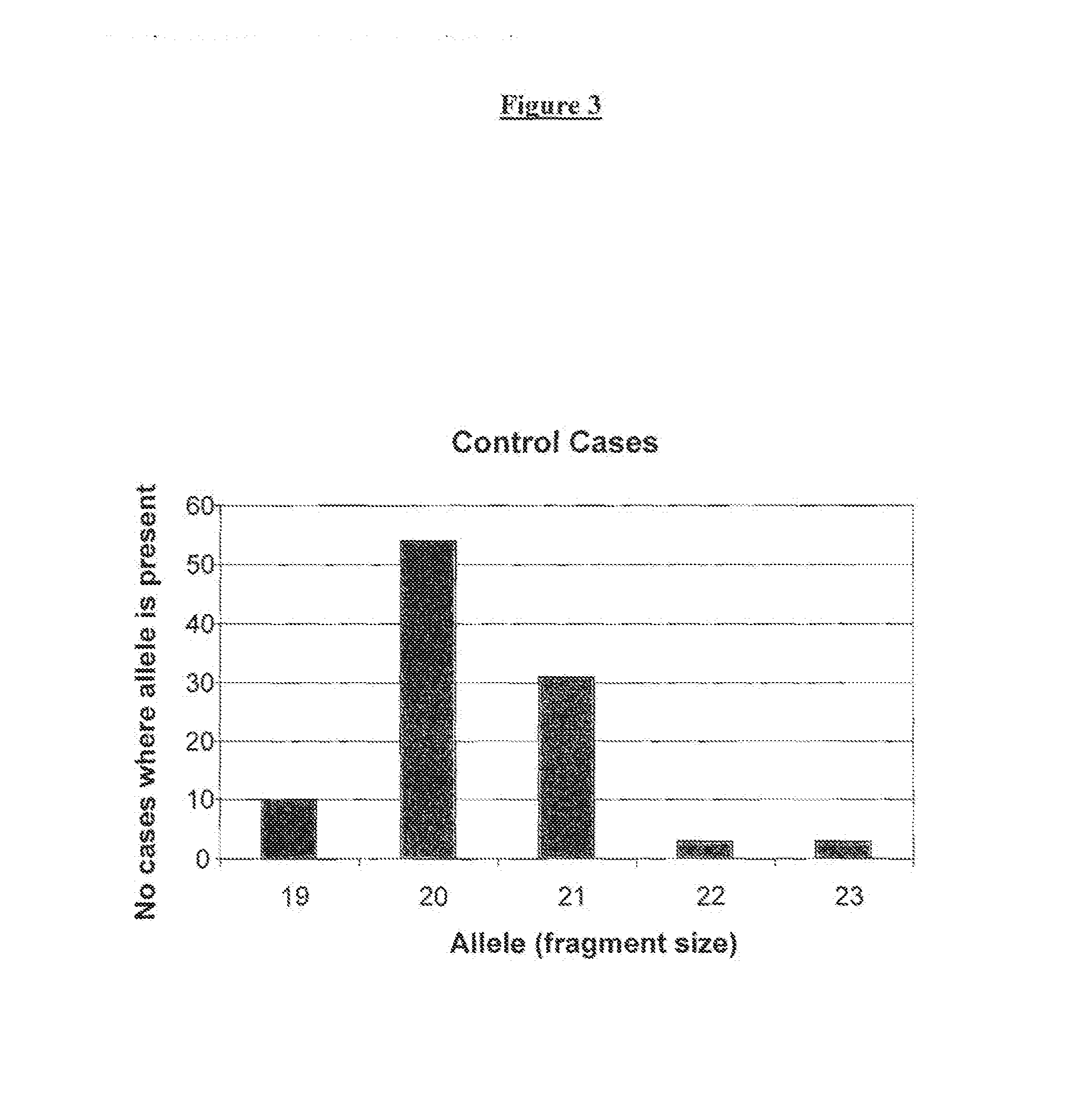Neprilysin Gene Polymorphism and Amyloid Beta Plaques in Traumatic Brain Injury
a traumatic brain injury and amyloid beta plaque technology, applied in combinational chemistry, biochemistry apparatus and processes, library screening, etc., can solve the problem of not having a method of identifying tbi patients at risk for a deposition, and achieve the effect of reducing the risk of amyloid deposition
- Summary
- Abstract
- Description
- Claims
- Application Information
AI Technical Summary
Benefits of technology
Problems solved by technology
Method used
Image
Examples
experimental examples
[0120]The invention is further described in detail by reference to the following experimental examples. These examples are provided for purposes of illustration only, and are not intended to be limiting unless otherwise specified. Thus, the invention should in no way be construed as being limited to the following examples, but rather, should be construed to encompass any and all variations which become evident as a result of the teaching provided herein.
[0121]The materials and methods employed in the experiments disclosed herein are now described.
Cohort Population
[0122]A cohort of human traumatic brain injury cases (N=81) was selected from a diagnostic neuropathology archive. These brains were analyzed for the presence or absence of amyloid plaques. The cohort was then divided into an amyloid positive group (n=19) and a control, or amyloid negative (n=62), group for the purposes of this study.
[0123]Tissue from the brains of the study cohort cases was subjected to gen...
example 1
Identification of Alleles and Genotypes Present in the Study Cohort
[0127]Genetic analysis revealed the presence of 5 individual alleles and 10 genotypes within the study cohort. Each allele is defined by the number of GT repeats found for that polymorphism and named accordingly. Individual alleles for 19, 20, 21, 22, and 23 GT repeats within the NEP promoter were all observed in the present study's patient cohort.
[0128]The genotypes are described according to the number of GT repeats encode by each allele found to be present in an individual, and are as follows: 19 / 20; 19 / 21; 19 / 22; 20 / 20; 20 / 21; 20122; 20 / 23; 21 / 21; 21 / 22; and 21 / 23.
example 2
Association of NEP Polymorphisms with Aβ Disposition in Subjects with Traumatic Brain Injury (TBI)
[0129]Among the patient cohort with traumatic brain injury (TBI), NEP polymorphisms that encode longer length of the GT repeat were more prevalent in cases with Aβ deposition (FIG. 2) as compared to controls that did not exhibit Aβ deposition (FIG. 3). Table 1 depicts the frequency of the allele encoding exactly 20 GT repeats occurs in control (amyloid negative) and amyloid positive individuals.
[0130]Table 2 depicts the frequency of the allele encoding exactly 22 GT repeats occurs in control (amyloid negative) and Aβ positive individuals. These data indicate that presence of allele 22 was independently associated with an increased risk of having Aβ plaques (p<0.003) in patients with TBI, where as the presence of allele 20 (p<0.03) was associated with a decreased risk.
[0131]Each member of the study cohort was genotyped according to the GT repeat polymorphism detected using PCR and fragme...
PUM
| Property | Measurement | Unit |
|---|---|---|
| size | aaaaa | aaaaa |
| soluble | aaaaa | aaaaa |
| hydrophobic | aaaaa | aaaaa |
Abstract
Description
Claims
Application Information
 Login to View More
Login to View More - R&D
- Intellectual Property
- Life Sciences
- Materials
- Tech Scout
- Unparalleled Data Quality
- Higher Quality Content
- 60% Fewer Hallucinations
Browse by: Latest US Patents, China's latest patents, Technical Efficacy Thesaurus, Application Domain, Technology Topic, Popular Technical Reports.
© 2025 PatSnap. All rights reserved.Legal|Privacy policy|Modern Slavery Act Transparency Statement|Sitemap|About US| Contact US: help@patsnap.com



